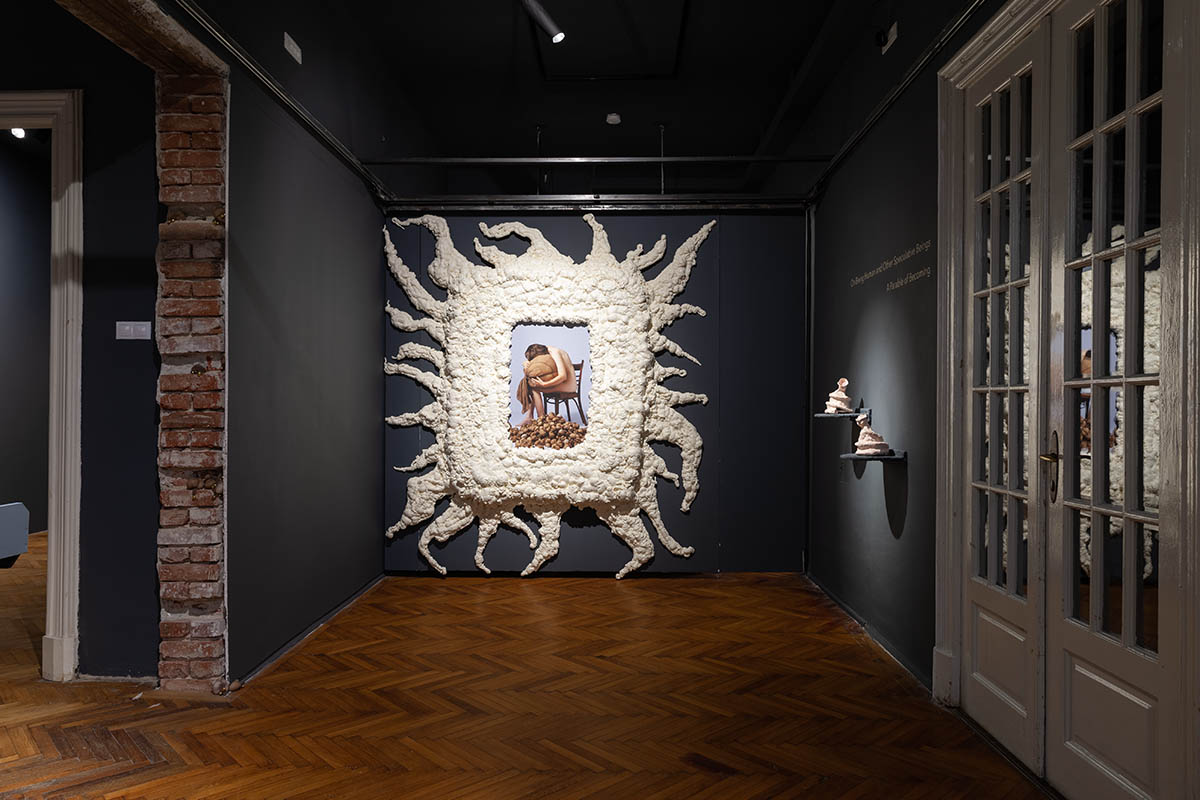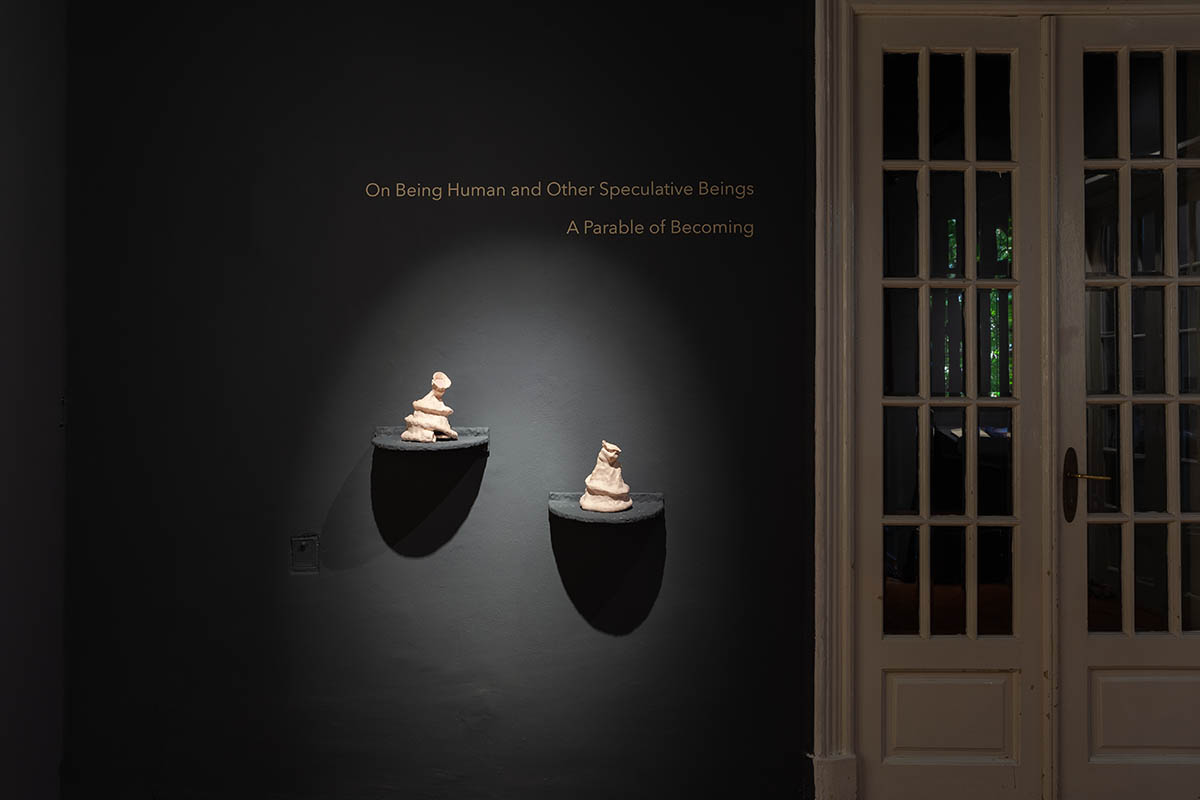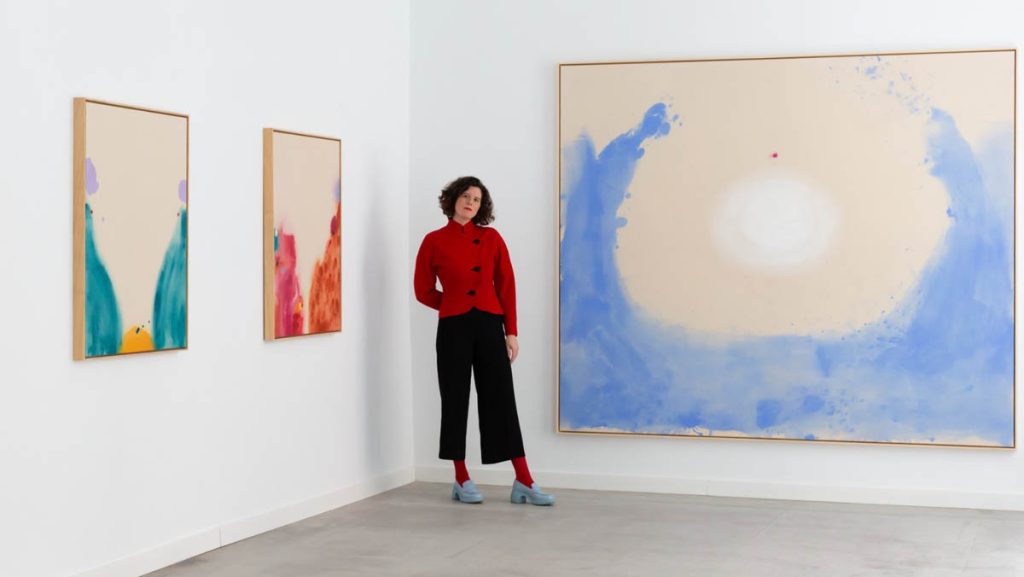
Devoured by recurring dreams of human cruelty, one day Yeong-hye, the main character in the novella The Vegetarian, develops an irreversible repulsion to meat eating and decides to transform herself into a tree. Detached from all basic needs, the protagonist gradually distances herself from her family and the world, from voracious violence and its intolerance, from social conventions and norms, and from her own human essence, until she eventually becomes an entirely vegetal being. To be mistaken for vegetation itself becomes for her the supreme act of defiance against humanity. Above all, a story about identity, body and self-discovery, The Vegetarian explores the fundamental issue of individual freedom when faced with the realization, at times overwhelming, of what it is that makes a human.
I once wanted to become a plant… the artist Alexandra Boaru tells us through the written words and images of her bold testimony accompanying the project. While conventional metaphysics provides us with an extremely reductionist reading of plants in relation to the values – of spirit and reason – western civilization places at the center of its thinking, the vegetal beings personify the most essential connection life is able to forge with nature. Through its uninterrupted interaction with the elements, the very existence of plants is a cosmogony in action. “Botany, in this sense, has to describe all the forms of life capable of photosynthesis as inhuman and material divinities, domestic titans that do not need violence to found new worlds” (2).
And yet modern philosophy has marginalized them, always placing man at the center of creation.

The fact that plants exist in perfect opposition to and segregation from the combined universe of man and beast in no small measure has to do with their very metabolism: the plant kingdom is the only sphere of existence that does not depend on the intervention of other beings for its survival. The generalized parasitism and cannibalism on which the entire living domain is based is therefore entirely alien to them, for they turn everything they touch into life. In an era so convincingly framed by science in terms of the Anthropocene, our attention should perhaps focus more on how to put an end to the idea of human exceptionalism underlying this concept. What would it be like to live in a continuous cycle of morphing species, giving you the chance of immortal life but without the freedom to choose what you become or when you transition? This is the impossible question underpinning Alexandra Boaru’s investigation. An exploration of what human nature can still mean would appear today – when the entire planet is navigating so many multi-layered crises, somber outlooks and disillusionments – to be more relevant than ever. In seeking to redefine the human condition, the artist weaves a fictional, deeply personal and perfectly utopian fabric: a speculative universe in which the laws of evolution, of biology and genetics as we know them are turned completely on their head.
Without a set boundary between species, Alexandra creates a symbiotic system of cohabitation based on the random and mysterious fusion of different kingdoms. Thorn-flower-porcupine: just one example of the associative chain of involuntary connections illustrating the continuity of life on the hypothetical spectrum of the entire biosphere. Here the human encounters non-human animals, flora and even slime molds – in other words, myxogastria, those gelatinous and as yet still not fully understood creatures, which, lacking any kind of nervous system, are paradoxically endowed with a form of intelligence that allows them to change their morphology over successive life cycles. A terrestrial model of transformative, self-generating perpetuum mobile.
From the micro to the macroscopic, Alexandra’s project constitutes an expanding universe; a parahuman system of progression spanning a range of potentially endless variations. It could be that the artist is seeking to invent a new type of Darwinism that is radically different in terms of its holistic-transgressive vision.
And if this is true, then Alexandra is not alone in this endeavor. Inspired by the genre of speculative fiction, as well as prolific theoreticians like Donna Haraway and her Cyborg Manifesto (1985), the artist indirectly advocates the need to contest limitative contemporary paradigms of the relationship between man and nature. In order to mold the anthropocentric narrative into a perspective more conducive to other means of existence, the “chimeric revolution” Alexandra proposes opens the door to an alternative dimension as a place of metaphysical admixture. “I am a travelling consciousness”, she writes. The result is less an imaginary genetic laboratory for an improved Human 2.0 than a hybrid multiverse in which the evening out of the trophic chain reveals the fundamental interdependence between humans and all the other creatures with whom they cohabit within the same space.
I think we could all take a short vacation from being human by becoming something else from time to time, Alexandra tells me, quoting Thomas Thwaites, the famous artist who set off on a journey of transhumance in the company of a herd of goats.
In the mixed media installation presented by the artist, the reflective, intimate, confessional tone of each individual artifact allows us to intuit that the different moments on this journey of becoming-through-images are all fragments of a self-portrait. A camouflaged self-portrait. And in order to create her universe, Alexandra Boaru divides herself in two; her body becomes both object and subject of research, both agent and observer – a physical framework upon which can be built ad infinitum. Like a biologist impassively observing the recording of new species descending on us from a(n) (im)possible future, the artist captures snapshots of these fluid creatures during various stages of their development like in a specimen catalog of sorts. Amorphous or viscerally chimeric, altered or augmented, the human form speaks to us of fragility and vigor, oneiric calm and cosmic communion. At the center of this complex mechanism of regeneration is the Mother of Children, the being that reigns protectively over all the seeds in its universe. To cite the author Emanuele Coccia, the seeds on this speculative planet are what vegetation is on Earth: “If it is from plants that we ought to enquire what the world is, this is because they are the ones who ‘play the world’ [font monde]”. In other words, they represent a cosmic necessity – or, to use Alexandra’s term, a blob of consciousness.
Exhibition Title: “On Being Human and Other Speculative Beings. A Parable of Becoming”
Exhibition duration: 29th of June – 6th of August
Address and contact:
Galeria Posibilă
Str. Popa Petre 6, Sector 2
Bucharest, Romania
www.posibila.ro
Alexandra Boaru (b. 1997, Romania; Timișoara) is a multidisciplinary artist, her works including photography, performance and video. Her practice provokes the concept of “human“ and its impact on the exterior, others or its own self. One of the main themes that can be seen throughout her artworks is the exploration of boundaries between being human and becoming something else, using her body as a mannequin and willingly objectifying herself. She becomes both the observer and the observed. Her approach can be described as poetical, being influenced by 20th-century literature and the ’70s conceptualism.
Notes:
(1) Han Kang, The Vegetarian, Portobello Books, UK, 2015, p. 56
(2) Emanuele Coccia, The Life of Plants. A Metaphysics of Mixture, translated by Dylan J. Montanari, Polity Press, UK, 2019, p. 19





